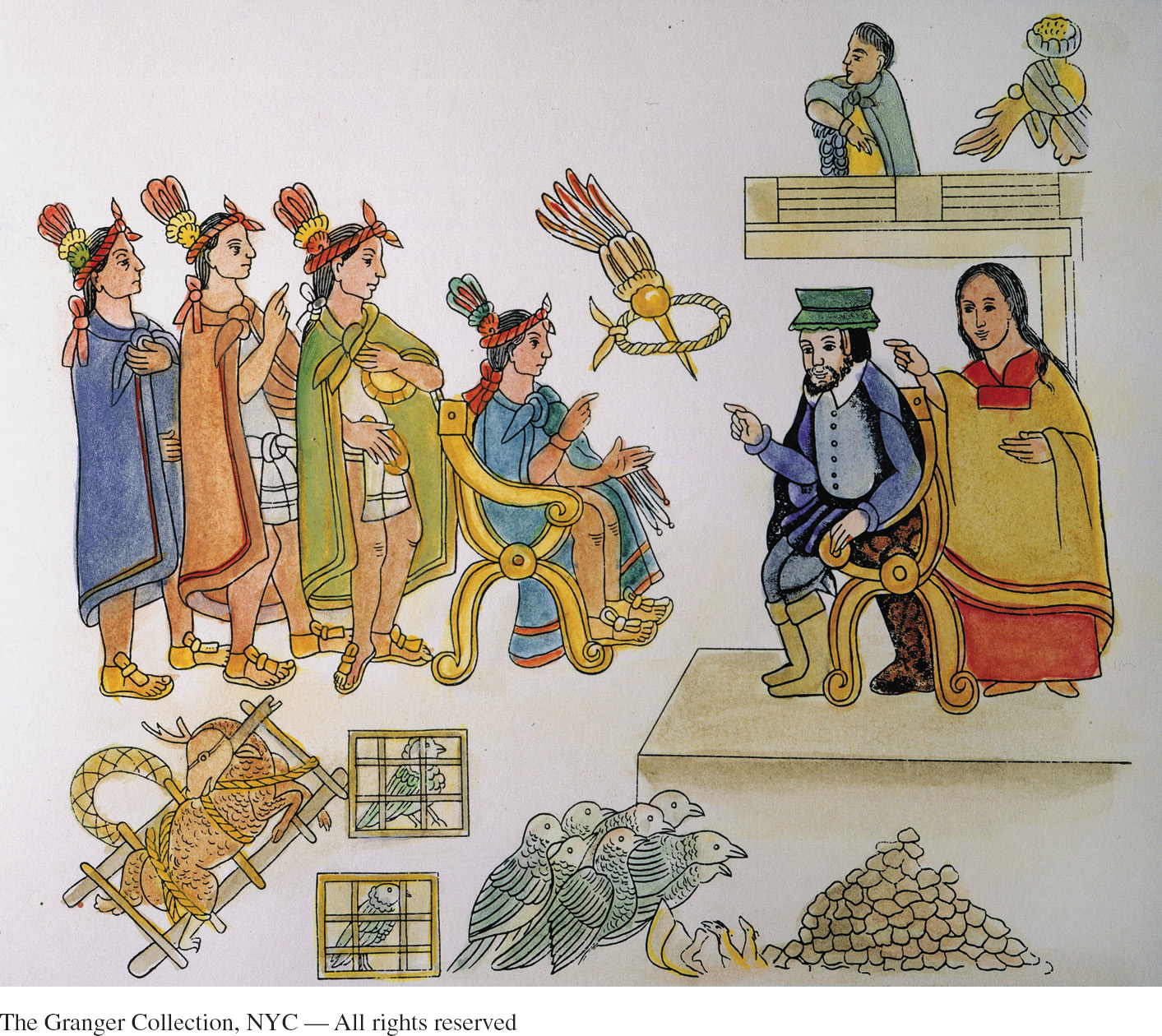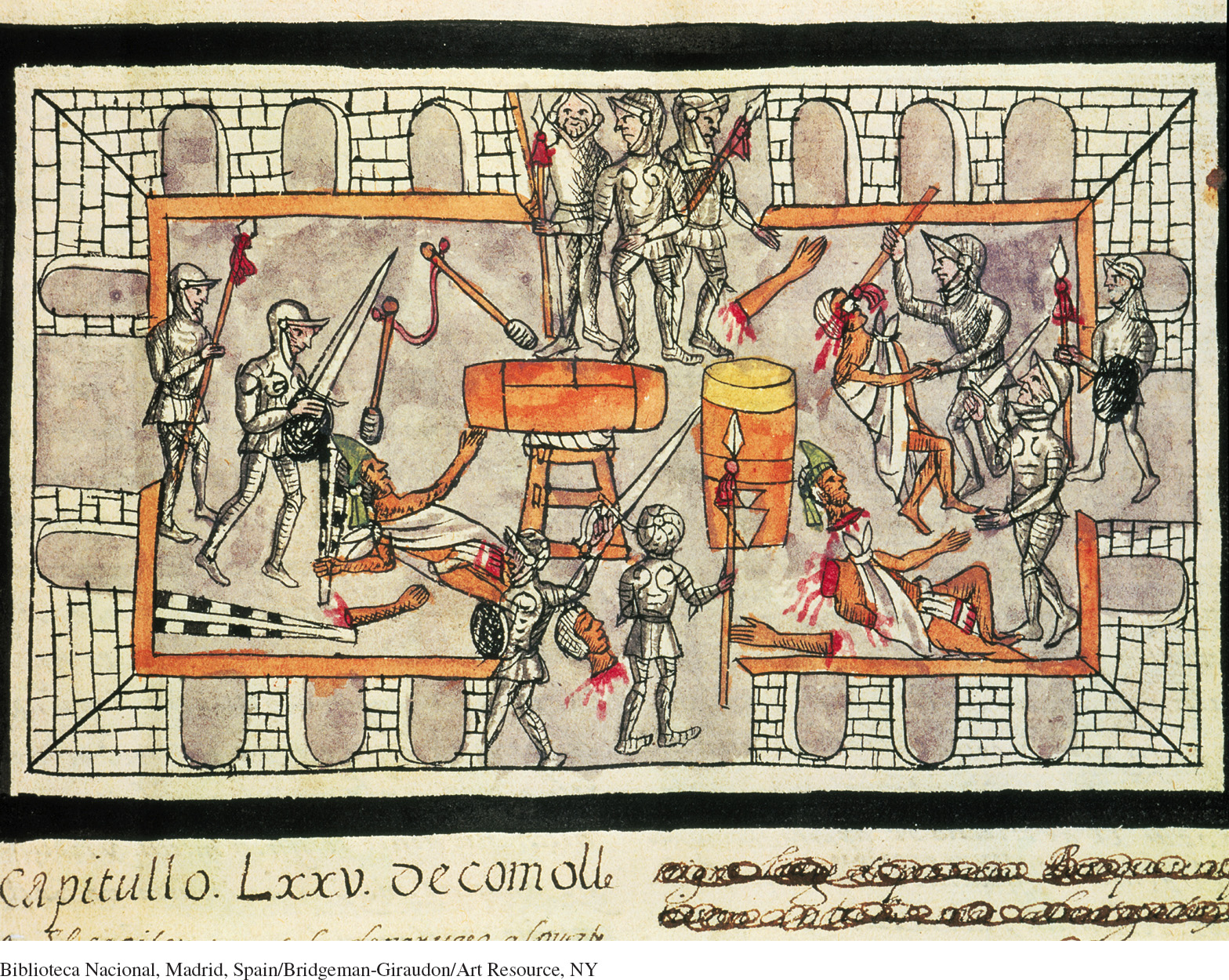Source 13.3
Images of Encounter
Source 13.3A presents yet another Mesoamerican view of that epic encounter between Cortés and Moctezuma, drawn from the Lienzo de Tlaxcala, a series of paintings completed by 1560. Created by Tlaxcalan artists, who had absorbed some elements of European styles, these paintings highlighted the role of the Tlaxcalan people as valued allies of the Spanish.
Questions to consider as you examine the sources:
- How does this painting present the relationship between Cortés and Moctezuma? Are they meeting as equals, as enemies, as allies, or as ruler and subject? Notice that both sit on European-
style chairs, which had come to suggest authority in the decades following Spanish conquest. Is it significant that Cortés is seated on a platform? - Does this image support or challenge the perception that the Aztecs viewed the Spanish newcomers, at least initially, in religious terms as gods?
- What impression of Doña Marina does this image suggest? (See Zooming In: Doña Marina: Between Two Worlds, Chapter 13.)
Source 13.3A
Moctezuma and Cortés

Source 13.3B
The Massacre of the Nobles
Whatever the character of their initial meeting, the relationship of the Spanish and Aztecs soon deteriorated amid mutual suspicion. Within a week, Cortés had seized Moctezuma, holding him under a kind of house arrest in his own palaces. For reasons not entirely clear, this hostile act did not immediately trigger a violent Aztec response. Perhaps Aztec authorities were concerned for the life of their ruler, or possibly their factional divisions inhibited coordinated resistance.
But in May 1520, while Cortés was temporarily away at the coast, an incident occurred that set in motion the most violent phase of the encounter. During a religious ceremony in honor of Huitzilopochtli, the Aztec patron deity of Tenochtitlán, the local Spanish commander, apparently fearing an uprising, launched a surprise attack on the unarmed participants in the celebration, killing hundreds of the leading warriors and nobles. An Aztec account from The Florentine Codex described the scene:
When the dance was loveliest and when song was linked to song, the Spaniards were seized with an urge to kill the celebrants. They all ran forward, armed as if for battle. They closed the entrances and passageways . . . then [they] rushed into the Sacred Patio to slaughter the inhabitants. . . .
Source 13.3B shows a vivid Aztec depiction of this “massacre of the nobles,” drawn from the Codex Duran, first published in 1581.
Questions to consider as you examine the sources:
- What elements of the preceding description are reflected in this painting?
- What image of the Spanish does this painting reflect?
- What do the drums in the center of the image represent?
Source 13.3B
The Massacre of the Nobles

Notes
- Stuart B. Schwartz, Victors and Vanquished (Boston: Bedford/St. Martin’s, 2000), 164.